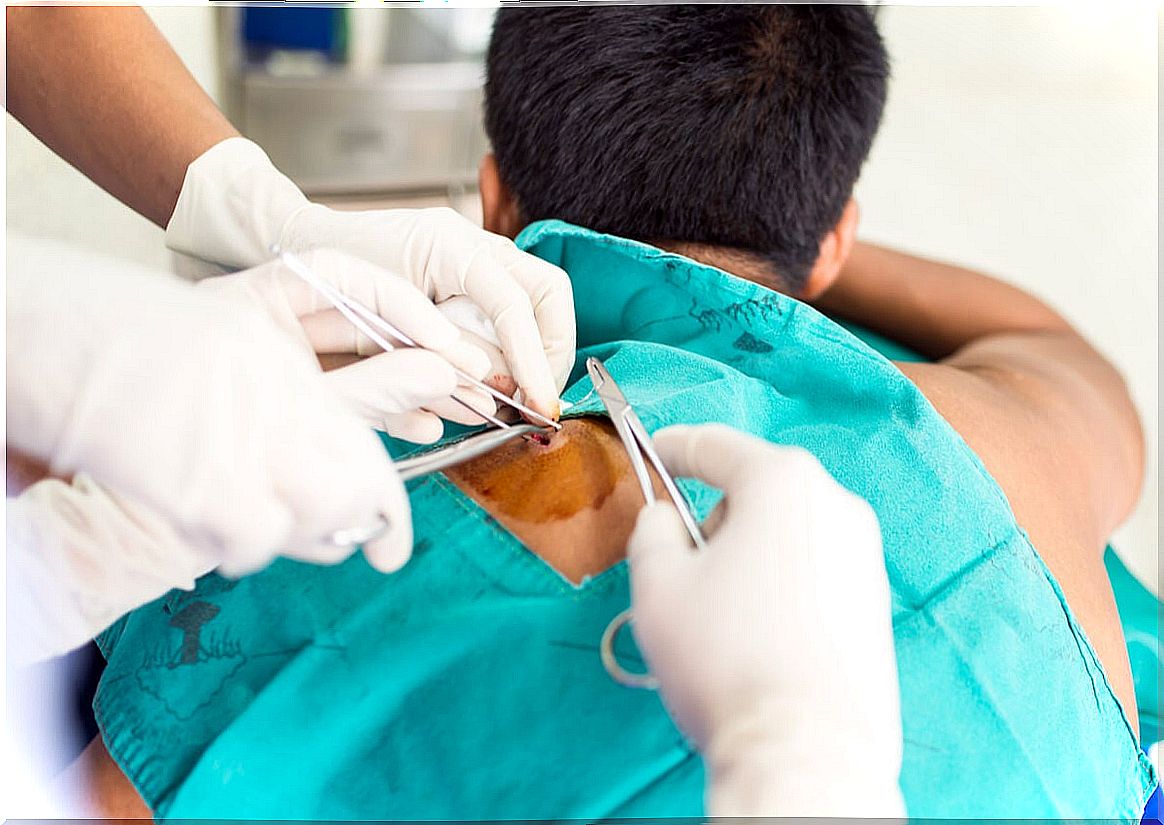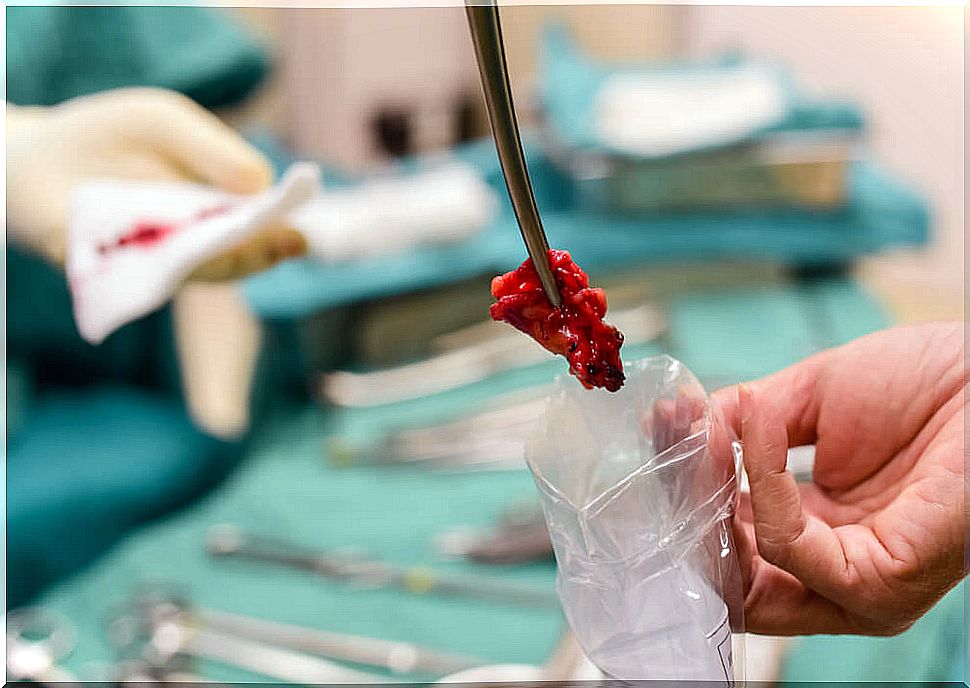Desmoid Tumors: Symptoms, Diagnosis And Treatment
Desmoid tumors are a rare disease that affects connective tissue. They are also called aggressive fibromatosis, deep fibromatosis , or non-metastatic fibrosarcoma.
They are tumors that develop in soft tissues. The areas most commonly affected are the abdomen, arms, and legs. It is important to know that desmoid tumors are not considered cancer, since they do not have the ability to metastasize.
However, they do have invasive power at the local level. In addition, they have a high recurrence rate. Therefore, in this article we explain everything you need to know about them and how they are treated.
What are desmoid tumors?
As we have pointed out in the introduction, desmoid tumors are those that develop from the connective tissue of the body. This tissue is what acts as a support for the organs and the different parts of the body. That is why they can appear in different locations.
In general, they are divided into two groups. First there are the intra-abdominals. On the other hand, we find the extra-abdominals, which include those that appear in the extremities, in the head and in the neck.
As Cancer.Net professionals explain , desmoid tumors are considered a rare disease. They are rare, accounting for less than 3% of all soft tissue tumors. In terms of frequency, they affect women more than men.
The truth is that, being made up of cells that cannot metastasize, they are not considered cancers. Metastasis is the phenomenon whereby cancer cells break away from the original tumor and give rise to another tumor in a different location.

What can cause them?
The cause of desmoid tumors is not clear. As with the rest of the neoplasms, it is known that the excessive growth of the cells is due to a mutation in the DNA. In this case, it is the cells called fibroblasts that get out of control.
As the World Organization for Rare Diseases points out, desmoid tumors can appear sporadically or have a genetic component. Sporadic cases are more frequent and appear to be related to repeated trauma or injury to some part of the body.
Genetic cases are associated with mutations in the APC gene. This gene is associated with a disease called hereditary familial adenomatous polyposis . It is a pathology that consists of the appearance of polyps throughout the intestine. In turn, it is linked to a high risk of colorectal cancer.
Experts at the Mayo Clinic also explain a number of factors that can increase the risk of developing a desmoid tumor. One of them is age. These tumors are more common in adults between the ages of 20 and 30.
Pregnancy can also play a role, because they are more common during or just after pregnancy. As we have pointed out before, any injury and even a surgical procedure is also a risk factor.
Symptoms of desmoid tumors
The symptoms of desmoid tumors will depend on where this formation is found. As we mentioned at the beginning of the article, the areas where they occur most frequently are the extremities and the abdomen.
However, they can appear anywhere. That is why it is essential to pay attention to any body changes. These types of neoplasms usually manifest as a lump or mass that causes pain.
In addition, it may be that the area that is affected loses part of its functionality. For example, if they appear on the arm, mobility or sensitivity may be affected. This is because the tumor can compress neighboring structures, such as blood vessels or nerves.
Nausea and severe cramping pain are common in intra-abdominal desmoid tumors. In some cases they can cause intestinal perforation, rectal bleeding or kidney pain.
When to consult the doctor?
Many times, these types of neoplasms are asymptomatic for a long time. Therefore, before any lump or mass that is appreciated, it is essential to go to the doctor. A thorough examination is required to determine the cause of such prominences, as it could be a tumor.
Diagnosis of desmoid tumors
An extensive physical examination is essential to diagnose these neoplasms. Most often, the patient notices a lump and consults. In these cases, the doctor must carry out a series of complementary tests to be able to verify the nature of the injury.
To do this, imaging tests are used first. Ultrasound is one of the most requested, since it is low cost and harmless. However, it is usually necessary to do more precise ones, such as computed tomography or magnetic resonance imaging.
The test that usually provides the most information is the biopsy. It consists of extracting a sample of the tissue for analysis in the laboratory. Depending on where the tumor is, it can be obtained by open surgery or by needle and puncture.
In fact, in some cases the biopsy is aimed at removing the entire tumor. This is how it is possible to diagnose, as well as to treat. However, as explained in The Desmoid Tumor Research Foundation , some locations cannot be approached that way.
Available treatments
Currently there are different ways to treat desmoid tumors depending on their characteristics. In cases where the tumor is detected incidentally (that is, it does not cause symptoms), it may be preferable to maintain an expectant attitude. Only periodic reviews would be necessary to check growth.
Surgery is one of the most widely used treatment options. Especially in cases where the tumor is accessible and most of it can be removed. The problem is that these types of neoplasms affect nearby structures, such as vessels, nerves or organs.
There is a high recurrence rate after surgery. Other approach options are radiation therapy and chemotherapy. They are usually used in patients in whom the tumor cannot be removed because the surgical risk is high or because it is very inaccessible.

Development and complications of desmoid tumors
The prognosis of desmoid tumors is highly variable. It may be favorable in cases where the location is extra-abdominal and adequate excision is plausible. However, when they are intra-abdominal there is a greater risk of damaged or damaged structures.
Even from being injured trying to remove it. That is why intra-abdominals are associated with more complications. The main one, as we have pointed out, is the high recurrence rate. In other words, the tumor reappears after treatment, as Orphanet explains .
Desmoid tumors, like any other type of neoplasm, have a great impact on the life of the patient. They can cause worry, fear, and stress. Especially in cases where the prognosis is not very favorable.
That is why it is essential to have good support, both personally and from the medical team. It is essential to try to resolve all doubts about the disease. As a complement, it is recommended to try to seek psychological support if the situation becomes very difficult to cope with.
Desmoid tumors are rare, but can be serious
It is important to emphasize again that these types of tumors are very rare. In addition, they do not have metastatic capacity, so they cannot give rise to another tumor focus. However, they can be very aggressive locally and damage neighboring structures.
These types of tumors are complex to diagnose when they do not produce any symptoms. Therefore, in the event of any abnormality, such as a lump or unexplained pain, it is essential to see a doctor.








